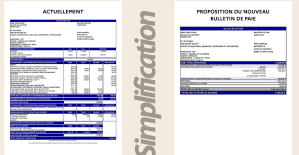Offshore wind power is one of the pillars in the energy mix that the traffic light coalition in Berlin wants to promote. Offshore wind farms deliver more stable and larger amounts of electricity than onshore wind farms. From currently around eight gigawatts (8000 megawatts) of power from a total of around 1500 wind turbines, the installed capacity in the German parts of the North Sea and Baltic Sea is to increase to 30 gigawatts by 2030, to 40 gigawatts by 2035 and to 45 gigawatts by 2045.
Within less than seven years, the German offshore capacity is to be quadrupled - the industry needed about 15 years for the previous eight gigawatts. For the crash program desired by the federal government, almost everything the industry needs is missing on the coasts: After the first offshore expansion wave in the past decade, the federal government slowed down the expansion, and most of the industry then migrated away again. A larger offshore industrial core is only found in Cuxhaven these days, where Siemens Gamesa produces wind turbines and Titan Wind produces steel foundations. In Nordenham, Steelwind also manufactures foundation tubes, so-called monopiles.
The construction of heavy-duty terminals has been completely neglected in recent years. In Bremerhaven, for example, the construction of such a plant in the Weser failed in court after years of political disputes. The companies that want to build offshore wind farms in German waters are dependent on free capacities, especially in the plants in Eemshaven in the Netherlands and in Esbjerg in Denmark.
The German port industry is alarmed. “If we take climate protection and the expansion targets seriously, we have to create the necessary capacities in the seaports as quickly as possible. This applies both to the construction of new offshore facilities and to the expansion offensive on land," said Angela Titzrath, President of the Central Association of Seaport Companies (ZDS). Titzrath's main job is CEO of the Hamburg port logistics group HHLA. The ZDS represents the interests of 156 port and logistics companies in the five German coastal states.
"We keep hearing from the industry that there is a lack of production capacity for wind turbines in Europe to cover Germany's needs in the coming years. We need significantly more heavy-duty areas in the ports that are large enough for modern wind turbines to import these systems and to expand them offshore,” said Titzrath. "In addition, the obstacles to carrying out necessary heavy-duty transports must be removed, approval procedures shortened and staffing optimized."
In Cuxhaven, the state of Lower Saxony wants to push ahead with the construction of three new heavy-duty berths and thus strengthen the location as a hub for the wind power industry overall. “We very much welcome the fact that the state of Lower Saxony is taking the lead at the Cuxhaven site and is creating new heavy-duty areas. For this national task, however, we need a cross-locational organization of the necessary investments along the entire German North Sea and Baltic Sea coast," said Titzrath. It also requires a “foresighted creation of a uniform set of regulations. Politicians and the port industry have shown what is possible with the LNG terminals,” said Titzrath. "We have to repeat that in order to master the expansion goals and thus the energy transition as a whole."
Within a few months last year, the conditions for the installation of floating import terminals for the import of deep-frozen, liquefied natural gas (LNG) were created, the first of which were stationed in Wilhelmshaven, Brunsbüttel and Lubmin. The reason for this was the loss of Russian pipeline gas as a result of the Russian invasion of Ukraine.
The city of Cuxhaven itself also wants to significantly expand its areas for the wind power industry. However, the planned projects have not yet been secured. "The berths 5 to 7 at the port of Cuxhaven are urgently needed if the expansion of offshore wind power in Germany is to progress as planned," said Marc Itgen, head of the Cuxhaven Agency for Economic Development, WELT. “The construction of berths 5 to 7 will cost a total of 300 million euros, of which the state of Lower Saxony has already committed 100 million euros. We are now waiting for the federal government's commitment for its 100 million euro contribution to the expansion of the quays. Only then can the remaining 100 million euros be raised from the private sector.”
Itgen said the future berths would have to withstand extreme loads. “The new berths have to withstand loads of up to 2500 tons in daily business, with monopiles of up to 130 meters in length. Titan Wind also wants to manufacture such foundations in Cuxhaven in the future.” Added to this is the growing need for the import of wind turbines: “Vestas alone imports 3,500 to 4,000 wind power components a year via Cuxhaven for its onshore turbines, which are installed in Germany and neighboring countries from nacelles to rotors to tower segments,” said Itgen. “And at Vestas alone, that number could rise to 5,500 to 6,000 components a year. Then there are the requirements for handling at Siemens Gamesa and at Titan Wind.”

 His body naturally produces alcohol, he is acquitted after a drunk driving conviction
His body naturally produces alcohol, he is acquitted after a drunk driving conviction Who is David Pecker, the first key witness in Donald Trump's trial?
Who is David Pecker, the first key witness in Donald Trump's trial? What does the law on the expulsion of migrants to Rwanda adopted by the British Parliament contain?
What does the law on the expulsion of migrants to Rwanda adopted by the British Parliament contain? The shadow of Chinese espionage hangs over Westminster
The shadow of Chinese espionage hangs over Westminster Colorectal cancer: what to watch out for in those under 50
Colorectal cancer: what to watch out for in those under 50 H5N1 virus: traces detected in pasteurized milk in the United States
H5N1 virus: traces detected in pasteurized milk in the United States What High Blood Pressure Does to Your Body (And Why It Should Be Treated)
What High Blood Pressure Does to Your Body (And Why It Should Be Treated) Vaccination in France has progressed in 2023, rejoices Public Health France
Vaccination in France has progressed in 2023, rejoices Public Health France The right deplores a “dismal agreement” on the end of careers at the SNCF
The right deplores a “dismal agreement” on the end of careers at the SNCF The United States pushes TikTok towards the exit
The United States pushes TikTok towards the exit Air traffic controllers strike: 75% of flights canceled at Orly on Thursday, 65% at Roissy and Marseille
Air traffic controllers strike: 75% of flights canceled at Orly on Thursday, 65% at Roissy and Marseille This is what your pay slip could look like tomorrow according to Bruno Le Maire
This is what your pay slip could look like tomorrow according to Bruno Le Maire Sky Dome 2123, Challengers, Back to Black... Films to watch or avoid this week
Sky Dome 2123, Challengers, Back to Black... Films to watch or avoid this week The standoff between the organizers of Vieilles Charrues and the elected officials of Carhaix threatens the festival
The standoff between the organizers of Vieilles Charrues and the elected officials of Carhaix threatens the festival Strasbourg inaugurates a year of celebrations and debates as World Book Capital
Strasbourg inaugurates a year of celebrations and debates as World Book Capital Kendji Girac is “out of the woods” after his gunshot wound to the chest
Kendji Girac is “out of the woods” after his gunshot wound to the chest Skoda Kodiaq 2024: a 'beast' plug-in hybrid SUV
Skoda Kodiaq 2024: a 'beast' plug-in hybrid SUV Tesla launches a new Model Y with 600 km of autonomy at a "more accessible price"
Tesla launches a new Model Y with 600 km of autonomy at a "more accessible price" The 10 best-selling cars in March 2024 in Spain: sales fall due to Easter
The 10 best-selling cars in March 2024 in Spain: sales fall due to Easter A private jet company buys more than 100 flying cars
A private jet company buys more than 100 flying cars This is how housing prices have changed in Spain in the last decade
This is how housing prices have changed in Spain in the last decade The home mortgage firm drops 10% in January and interest soars to 3.46%
The home mortgage firm drops 10% in January and interest soars to 3.46% The jewel of the Rocío de Nagüeles urbanization: a dream villa in Marbella
The jewel of the Rocío de Nagüeles urbanization: a dream villa in Marbella Rental prices grow by 7.3% in February: where does it go up and where does it go down?
Rental prices grow by 7.3% in February: where does it go up and where does it go down? Europeans: “All those who claim that we don’t need Europe are liars”, criticizes Bayrou
Europeans: “All those who claim that we don’t need Europe are liars”, criticizes Bayrou With the promise of a “real burst of authority”, Gabriel Attal provokes the ire of the opposition
With the promise of a “real burst of authority”, Gabriel Attal provokes the ire of the opposition Europeans: the schedule of debates to follow between now and June 9
Europeans: the schedule of debates to follow between now and June 9 Europeans: “In France, there is a left and there is a right,” assures Bellamy
Europeans: “In France, there is a left and there is a right,” assures Bellamy These French cities that will boycott the World Cup in Qatar
These French cities that will boycott the World Cup in Qatar NBA: the Wolves escape against the Suns, Indiana unfolds and the Clippers defeated
NBA: the Wolves escape against the Suns, Indiana unfolds and the Clippers defeated Real Madrid: what position will Mbappé play? The answer is known
Real Madrid: what position will Mbappé play? The answer is known Cycling: Quintana will appear at the Giro
Cycling: Quintana will appear at the Giro Premier League: “The team has given up”, notes Mauricio Pochettino after Arsenal’s card
Premier League: “The team has given up”, notes Mauricio Pochettino after Arsenal’s card


















